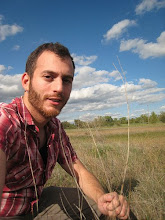I debated whether or not to include Rainbow Lagoon as a natural area. No doubt, the interpretive signs around the lagoon tells you that it is a haven for wildlife. There is half a truth to what they say. But that means that there is also a big fat half-lie too.
There is very little natural habitat here. The upland areas are mostly covered with lawns and non-native palm trees. It's a very urban park here, and there isn't to support wildlife here.
In the last century, most of this area was open ocean. The semi-circular Rainbow Pier was created in the 1920s, along with the Long Beach Municipal Auditorium. Soon after, the City began filling in the open water behind the pier. With the decline of Long Beach's downtown in the 1970s and 1980s, the City undertook aggressive revitalization plans, which included massive filling of the area behind the pier, to create the modern-day landscape.
Thus, Rainbow Lagoon is the vestige of the sheltered cove that was once protected by Rainbow Pier.
Oceanic salt water fills Rainbow Lagoon via underground pipes and culverts. This keeps a marine, but wave-free environmnent. In some ways, this is similar to natural lagoons (such as Malibu Lagoon) where waves are cut off by natural sand bars, which come and go with the seasons. In a natural state, this still water would be conducive the establishment of salt marsh plants, like Spartina foliosa. However, there are none to be found here.

In contrast to a natural lagoon, Rainbow Lagoon is paved with concrete and in general has a very hard "edge" which prevents the establishment of plants. As you can see in the picture above, there is no gradual shift from deep to shallow water; these gradients normally create a variety of depths, which are essential to a diverse fish community with species of different sizes. The far edge in the photograph is rocky, which adds a little diversity. But the hard substrate again does not allow plants to establish. No doubt the plant-free environment is an intentional component of the park management, as such plants could create nuissances in such an urban environment.

The blunted tidal inputs creates other problems for the lagoon: lack of oxygen. Wave energy and fresh inputs of ocean water would normally keep the oxygen levels high. Making matters worse, the concrete lining makes the water heat up in the sun, further depleting oxygen. To prevent oxygen levels from getting too low (which would result in massive fish-kills), water is agitated and circulated by fountains. These fountains also improve the aesthetics of the park.

The dense urban surroundings contribute a lot of pollution to the park, but vigilant maintenance keeps out most litter. Still, a lot of the junk that winds up in the lagoon contributes nutrients, like nitrate. These nutrients promote algae growth, which can be unsightly, odorous, and further deplete oxygen (remember: algae and other plants only produce oxygen when they are photosynthesizing--at night they consume oxygen, just like most living things).


The park is much more welcoming for human inhabitants than wildlife. There is a beautiful winding path that take you over colorful bridges, and paddle boats to take you over the water. It is a lovely park, just not wondeful for wildlife, notwithstanding this semi-informative interpretive sign:
And, in the end, the park is far better than a sterile lawn in terms of wildlife. I came across a green heron (Butorides viriscens) catching a small fish in the lagoon! These guys aren't exactly rare, but nor are they that commonly seen.


No comments:
Post a Comment